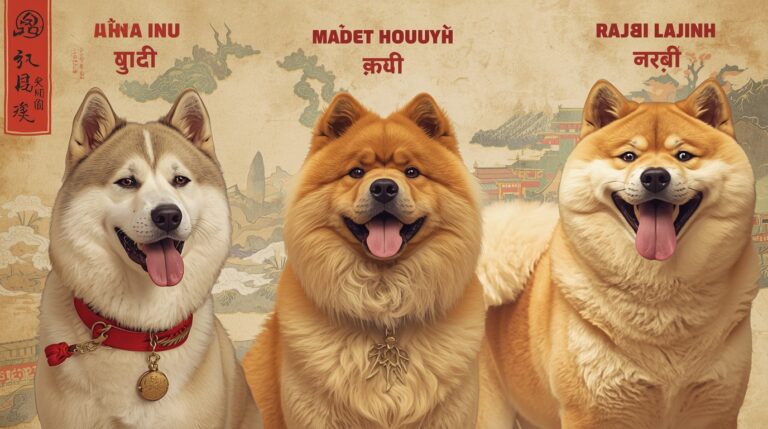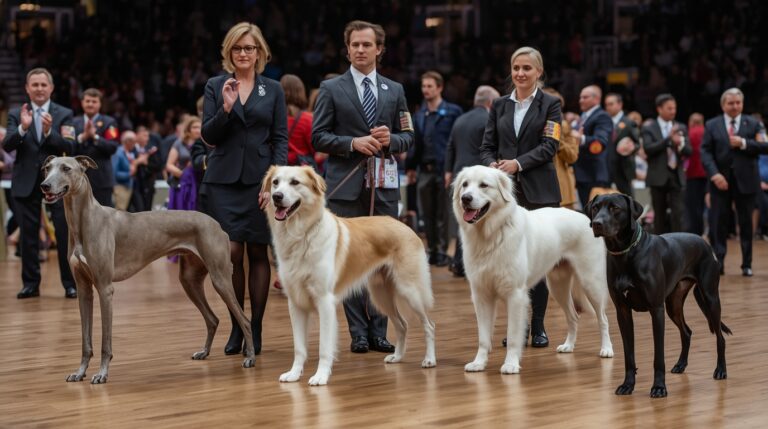Dogs in the Middle East: Salukis and Sighthounds – The Noble Hunters of the Desert

Introduction
Dogs in the Middle East have long held a unique place in both nomadic and settled communities. Among these, the Saluki—often referred to as the “Royal Dog of the Middle East“—and other sighthounds like the Sloughi and Tazi have played central roles in hunting, companionship, and cultural tradition. These elegant and fast dogs were not just pets but esteemed partners of Bedouin tribes and royal courts.
Historical Origins of Dogs in the Middle East
The domestication of dogs in the Middle East traces back over 12,000 years, with archaeological findings in Mesopotamia, Persia, and ancient Egypt confirming their early presence. Dogs featured in hieroglyphs, pottery, and burial sites, often buried beside their owners.
In the Fertile Crescent, where early human settlements flourished, dogs were used for herding, hunting, and protection. The Saluki, in particular, is believed to have been selectively bred for its speed, endurance, and grace.
The Saluki: Royal Dog of the Middle East
The Saluki is one of the oldest known dog breeds. Named after the ancient city of Saluq (possibly in modern-day Yemen or Syria), this breed is celebrated for its athletic physique, fine coat, and dignified demeanor. Salukis are quiet, independent, and intensely loyal to their owners.
Their slim build and long legs are optimized for speed, often reaching up to 42 mph, comparable to Greyhounds.
What Is a Sighthound?
Sighthounds are dogs that hunt primarily by sight and speed, unlike scent hounds, which rely on smell. Breeds like Saluki, Sloughi, and Afghan Hound fall into this category.
These dogs possess a deep chest, narrow waist, and long legs, making them perfect for chasing fast-moving prey like gazelles, hares, and desert foxes.
Bedouin Culture and the Saluki
For the Bedouins, Salukis were more than hunting tools—they were family. Often shared tents with their owners, Salukis were treated with deep respect. The dogs’ role in sustaining the tribe’s survival by hunting for food made them invaluable.
Salukis were so respected that pure lines were passed down orally, not sold, and only gifted to those deemed honorable.
Gazelle Hunting with Salukis
One of the most revered uses of Salukis was in gazelle hunting. These sighthounds were trained to work in tandem with falcons. The falcon would spot and distract the prey, while the Saluki would use its blazing speed to chase it down.
This method required coordination, obedience, and exceptional speed, a testament to the Saluki’s intelligence and athleticism.
Islamic Perspectives on Dogs
In Islam, the view on dogs is nuanced. While some traditions discourage keeping dogs indoors due to concerns of cleanliness, dogs used for protection, herding, or hunting are permitted. Salukis, due to their utility and close bonds with nomads, were often exempt from negative perceptions.
Hadiths mention hunting dogs as acceptable, particularly if trained properly.
Falconry and Sighthounds
The art of falconry, practiced for over 4,000 years in the Middle East, was often combined with sighthound hunting. A falcon would be released to spot prey, and a Saluki would follow shortly to chase and catch the animal.
This method symbolized harmony between man, falcon, and dog—a trio of elite hunters.
Salukis in the Arabian Peninsula
The United Arab Emirates, particularly Abu Dhabi, has established centers like the Saluki Center to preserve, train, and celebrate this breed. Dog racing events, hunting exhibitions, and educational programs promote cultural awareness of the Saluki’s role.
In Saudi Arabia and Qatar, Salukis are still used in falconry contests, blending tradition with modern-day recreation.
Breed Traits and Genetic Studies
Recent genetic studies published by institutions like the National Human Genome Research Institute confirm that Salukis, along with Basenjis, are among the oldest genetically distinct breeds.
Their DNA shows less influence from recent breeding compared to other popular dogs, maintaining a purer genetic line.
Other Middle Eastern Sighthound Breeds
Aside from Salukis, the Sloughi (North Africa) and the Tazi (Central Asia) are part of the Middle Eastern sighthound family. Each breed adapted to its region:
- Sloughi – Morocco, Algeria; shorter coat, used for hares and jackals.
- Tazi – Afghanistan; heavier coat, used in colder regions.
Adaptation to Desert Conditions
Salukis have thick foot pads, slender bodies, and minimal body fat to endure hot, dry climates. Their feathered tails and ears help regulate heat, while their keen eyesight aids in tracking prey over vast distances.
Saluki Training Techniques
Training a Saluki begins early, usually within 8-12 weeks. Due to their independence, training must focus on bond-building and positive reinforcement. Common techniques include:
- Clicker training for obedience
- Tracking drills in open areas
- Hunting simulations with mechanical lures
Modern Role of Salukis in Society
Today, Salukis serve as pets, therapy dogs, and even competitors in agility contests. However, their calm demeanor and need for space make them ideal for experienced dog owners, especially in villas or rural homes.
Salukis in the United Arab Emirates
The Emirates Kennel Club and Saluki Center in Abu Dhabi host events like:
- Saluki Races during national holidays
- Heritage Day Shows
- Youth Saluki Education Programs
These programs aim to instill pride in younger generations.
Breed Preservation and Conservation Efforts
Organizations like the Saluki Preservation Society and AKC Saluki Rescue work globally to maintain breed standards, educate owners, and rescue abandoned dogs.
Challenges in Breeding Pure Salukis
Maintaining pure bloodlines is challenging due to:
- Crossbreeding
- Genetic mutations
- Lack of documentation in some regions
Breeders are encouraged to DNA test their dogs and work with international registries.
International Recognition and Shows
Salukis are recognized by:
- American Kennel Club (AKC)
- Fédération Cynologique Internationale (FCI)
These dogs often win best-in-show due to their elegance and historical mystique.
Adoption and Ownership of Salukis
Saluki adoption requires understanding their unique needs:
- Minimum 1-hour daily exercise
- Fenced outdoor space
- Low tolerance for being alone
They do well with other dogs but may be aloof with strangers.
Cultural Representation in Art and Literature
Salukis appear in:
- Persian miniatures
- Egyptian tomb paintings
- Islamic calligraphy and poetry
They often symbolize grace, loyalty, and nobility.
Health and Lifespan of Salukis
Average lifespan: 12-14 years
Common issues:
- Heart disease
- Hypothyroidism
- Eye disorders
With proper care, Salukis can live long, healthy lives.
Salukis and Children or Other Pets
Salukis are gentle but require early socialization to coexist with small children or other animals. They’re generally non-aggressive, but their prey drive may activate around small pets.
Salukis in the Western World
The breed has gained popularity in Europe, North America, and Australia, appreciated for its exotic looks and regal history. Enthusiast clubs organize annual sighthound meets and breed education workshops.
Future of Salukis in the Middle East
Efforts are underway to digitize bloodline records, use genetic health monitoring, and document oral traditions to preserve this heritage breed.
Conclusion
The Saluki and other Middle Eastern sighthounds are more than dogs—they are living artifacts of a culture rooted in survival, nobility, and partnership with nature. Their legacy continues not only in the desert sands but also in the hearts of those who revere them worldwide.





